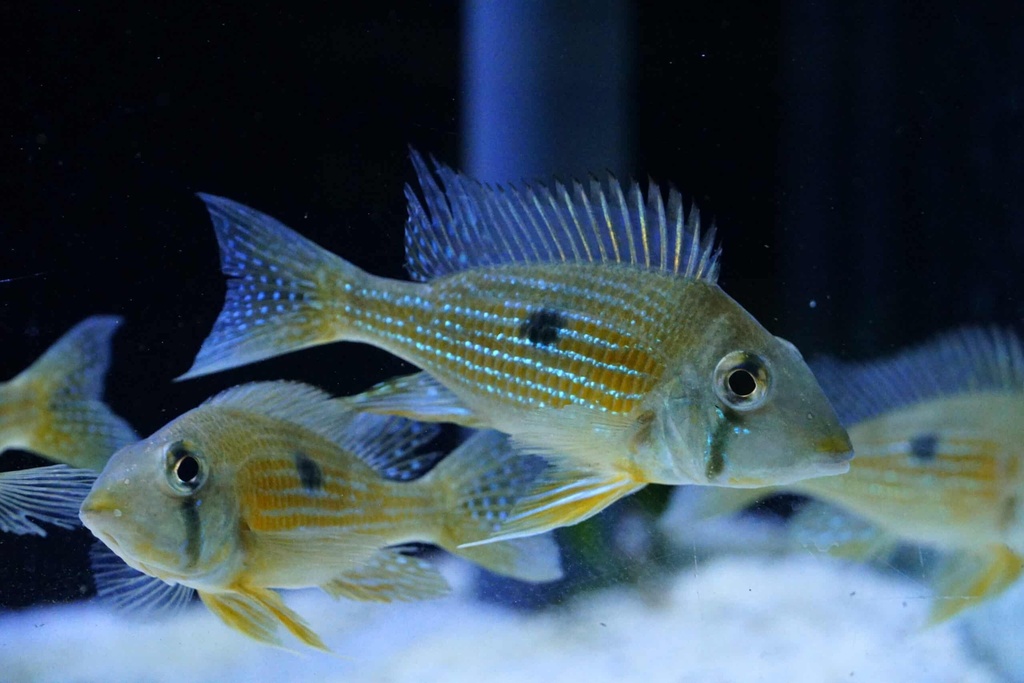Cheek-Stripe Eartheater
Scientific Name: Geophagus taeniopareius
Common Names: Yellow Striped Orinoco Eartheater, Cheek-Stripe Eartheater
Family: Cichlidae
Origin: South America (Orinoco River basin, including Ríos Caura, Cataniapo, and Atacavi, Venezuela and Colombia; fast-flowing rivers and flood zones)
Size: 5.6–6 inches (14–15 cm); males slightly larger with longer fins
Lifespan: 8–10 years with proper care
Behavior: Moderately aggressive, more quarrelsome than other Geophagus species, especially during breeding. Thrives in groups of 5–8 to reduce aggression toward weaker individuals and promote natural social hierarchy. Males may develop a slight nuchal hump when dominant.
Temperature: 77–86°F (25–30°C); avoid prolonged exposure below 75°F.
pH: 5.5–7.4 (slightly acidic to neutral).
Water Flow: Strong current (4–5 times tank volume per hour), mimicking fast-flowing Orinoco waters
Oxygenation: High, with powerheads or airstones to ensure well-oxygenated water
Tank Requirements: Minimum 55 gallons (208 liters) for a small group; 75 gallons or more for larger groups. Use a deep, soft sand substrate to support their eartheater sifting behavior. Include driftwood, rocks, and robust plants (e.g., Anubias, Java Fern) anchored to hardscape, as they may uproot substrate-planted vegetation. Provide open swimming space and hiding spots.\
Compatible with peaceful, larger fish like characids (e.g., Tetragonopterus chalceus), Corydoras catfish, or Geophagus surinamensis group members in larger tanks. Avoid small fish, shrimp, or aggressive cichlids that may provoke territorial disputes. Freshwater stingrays (Potamotrygon spp.) can be risky tankmates due to occasional nocturnal predation.
